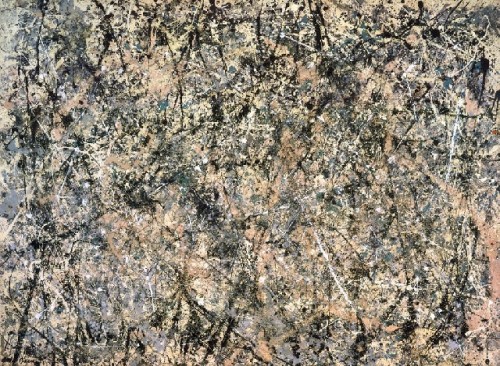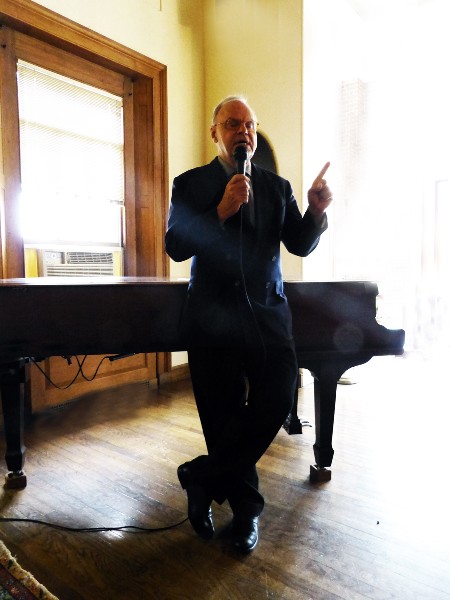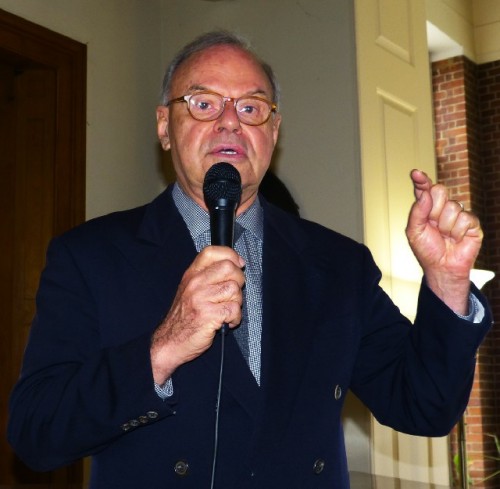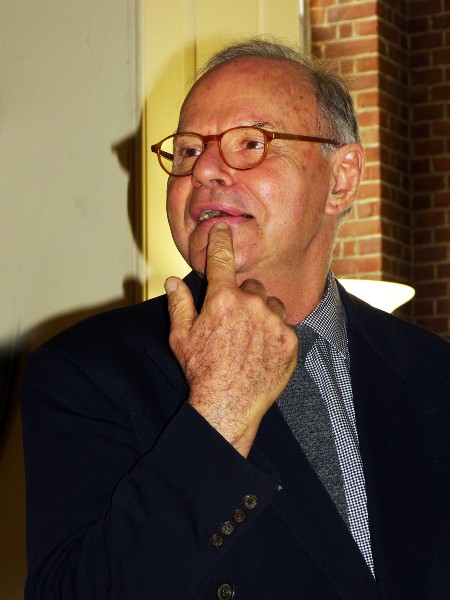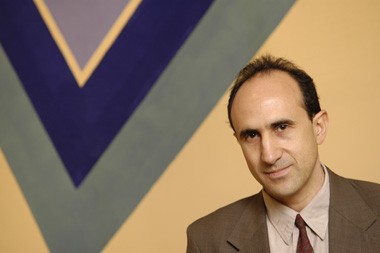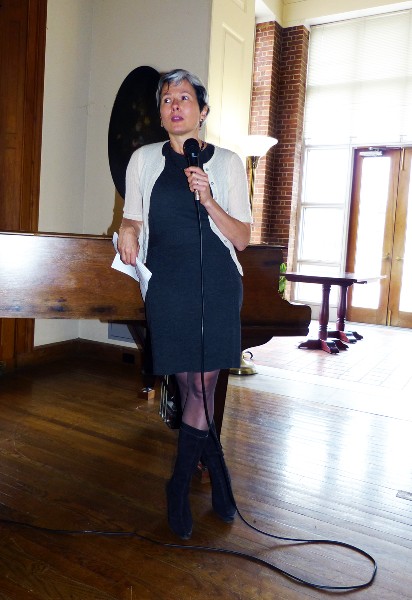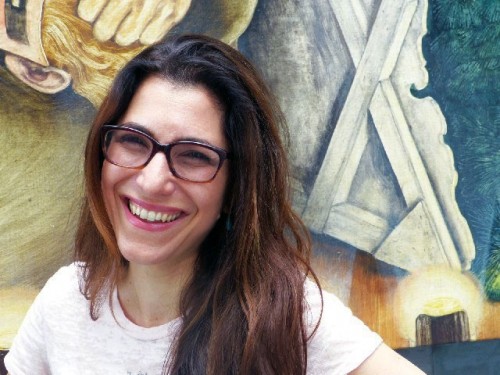The Clark Art Institute Embraces Modernism
Pollock's Masterpiece Lavender Mist This Summer
By: Charles Giuliano - Mar 20, 2014
The Sterling and Francine Clark Art Institute is known for one of the nation’s finest collections of 19th century French art with particular depth in Pierre-Auguste Renoir.
With limited space for special exhibitions, before the about to be completed expansion, there was an emphasis on popular and accessible exhibitions of 19th century masters particularly impressionists. This drew an annual attendance of 150,000 which is considered to be quite good for a regional museum.
Now open for 15 years the nearby Mass MoCA early on had between 80,000 to 90,000 visitors. More recently, particularly with related rock and performance programming, its attendance has grown to 125,000.
This summer it is anticipated that the Clark’s attendance will double with an increase of perhaps an additional 30,000 to 50,000 for Mass MoCA. This will be the first full season for MoCA’s Kiefer building which like Sol Lewitt will be on view for a number of years.
As we reported previously in an interview with Joe Thompson there is a bill that has passed the House and is being considered by The Senate to provide a $24.5 million grant to Mass MoCA. With an additional $30 million raised independently the museum hopes to double its exhibition space by some 120,000 square feet.
Not a part of that package is the disposition of a prominent building near the entrance to the museum which has been leased by the Clark. We asked Thompson for an update on that build out but he responded that it is a question to be addressed directly to the Clark’s director Michael Conforti.
A number of years ago I asked Conforti whether the Clark will ever move into the 20th century? Although the Clark and other museums were drawing substantial audiences for shows of 19th century art and impressionism he described going to the well too many times. As the demographics of the audiences aged he anticipated a shift where the most popular exhibitions would feature 20th century masters.
Starting this summer, according to Conforti, that time has come.
During a press conference by representatives of The Clark, Mass MoCA, the Williams College Museum of Art and Williamstown Theatre Festival, there was an overview of a special and exciting summer in Northern Berkshire County.
While WTF has announced a season that includes opera diva, Rene Fleming, in her first dramatic role, and Broadway star, Chita Rivera, one more show on the Nikos Stage will be announced shortly.
The season has been organized by Jenny Gersten who has left for another position in New York. She will visit during the season but administration will be led by Stephen Kaus as producer.
He teased the media by stating that the pending announcement will be on the level of Bradley Cooper in WTF’s hit revival of Elephant Man which is now scheduled for Broadway.
It will surely be a sensational season for Northern Berkshire County. As Thompson emphasized the greater and longer visitation will stimulate the depressed economy.
Primarily we asked about the plans and strategies for programming and synergy between the major museums with WCMA and the renowned WTF as part of the mix. Now that the Clark is completing their expansion, with Mass MoCA’s massive build out some five or six years in the future, the potential is just phenomenal.
As Thompson put it this greatly increases the critical mass of the cultural attractions of the Berkshires. It will then be up to visitors to decide where to focus their attention in South County (Tanglewood, Jacob’s Pillow, Norman Rockwell Museum, Berkshire Museum, Barrington Stage, Berkshire Theatre Group, Shakespeare & Company) or Northern Berkshire County (The Clark, Mass MoCA, WTF and WCMA).
Overall it looks like a win win for Western Massachusetts.
Before the conference began we spoke with Thompson and Conforti on their future collaborations.
Charles Giuliano What are your plans for the building the Clark has leased on the Mass MoCA campus?
Michael Conforti There’s a lot we can do. It can’t be forgotten that we’re not just in the building business.
Joe Thompson Despite what you may think.
MC We finished the Stone Hill building in 2008. We have been working the past five or six years completing this project. (expansion and renovation) It is an extraordinary project. It will be a great asset to the community as everybody knows. We can only take on one thing at a time. We are still a reasonably scaled institution. We know that we will be a part of the great future of Mass MoCA. We are so excited about the potential state support.
(A pending grant for $25.4 million that has passed the House and will soon be taken up in the Mass Senate.)
CG If the Clark is rooted in the 19th century and Mass MoCA is cutting edge is there a point in between of potential synergy?
MC 19th century? I don’t think we’re doing anything in the 19th century anymore.
CG I haven’t heard that before.
MC If you wait (for the press conference that followed) you will actually hear it.
You’re right to ask. Obviously it’s a very important component in terms of Mass MoCA. Regarding their future as well as our own. But we have to take these things at a Berkshire pace. Which means…
CG You have Pollock’s "Lavender Mist" coming this summer.
MC Exactly. So you know what we’re working on. You know that we’re not just only in the 19th century. (Looking at Joe) So slowly we’re coming together, aren’t we?
CG What will you have in that building on the MoCA campus? Will it be a teaser of Clark objects to pull traffic back and forth between the museums in North Adams and Williamstown?
MC We have no idea. We have initial plans which were formed. But they’re not worth announcing because I’m sure things will change. Enormous things are happening as we move along. Look what’s happening with MoCA’S Building 16 (a potential 120,000 square feet of new exhibition space). And our own program moving into the 20th century. When we have the opportunity of actually addressing it our initial ideas were charming archival ideas and we’ll move on to something else. And I don’t know what that something else is at this moment in time.
CG Joe what do you think about that kind of potential? Are you connecting the dots between the two institutions?
JT For all the reasons you mention we thought it was a great idea.
MC It remains a great idea. Joe and I walked the (MoCA) campus in the late 1990s imagining this. We’re long in the tooth and very patient because we’ve been in this community for a long time and we know that things can happen but you just need patience.
During the press conference that followed, among comments on the renovated and expanded campus opening on July 4, Conforti offered further insights on a programming shift embracing the 20th century.
MC We’re using this summer to embrace the 20th century in a way we never could before. We had very modestly scaled galleries. When we opened Stone Hill in 2008 we began to do a few more contemporary things. Linking a bit more with the ambitions of Mass MoCA but doing established artists; El Anatsui and Juan Muñoz (June 17, 1953 – August 28, 2001).
With this opportunity and a new special exhibition space it will be one of the most important additions to the cultural fabric of the Berkshires because it will allow us to do shows that we were never able to do before. Particularly works of large scale. Large Baroque paintings as well as large 20th century paintings.
This summer we will embrace three kinds of programs which we haven’t done. There will be a show of mid 20th century abstraction that’s coming from the National Gallery. It’s being overseen by their curator, Harry Cooper, who was a Clark fellow. It will probably have a life after the Clark because it’s a great exhibition and they are planning to loan it to other sites.
The David Smith estate has agreed, because we’re a little east of Bolton Landing (New York where the artist lived and worked) to take works and show them here for a period of time. It’s a show that Michael Brenson, a former critic of the New York Times, and others are involved in as they look at Smith’s polychromed sculptures.
Those are not the impressionist exhibitions that you expect of us but the Clark of the now and future. We will have as well the return exhibition from the Shanghai Museum, as part of the objects exchange we have done with them, an exhibition of some of their great Chinese bronzes.
The Shanghai Museum is the best museum in China and has the best collection of Chinese bronzes.
(We have visited the Shanghai Museum which is as Conforti states. Many of China’s greatest treasures, however, left with Chiang Kai-shek when he moved his government to Taipai, Taiwan.)
This is a part of our links to China which all of you know because of Sterling Clark’s explorations in China, and our joint programming. The non Western can and will be a part of our future programming.
Conforti was followed by Tina Olsen of the Williams College Museum of Art. We will discuss the museum’s programming at a later time when we meet with her. As a teaching museum it has a diverse mandate which is academic but has synergy and direct connections with both the Clark and Mass MoCA. These aspects are being strengthened with WCMA serving as an interface.
While the Clark will move into the 20th century the comment about being able to show large scale Baroque paintings was particularly significant.
During the period when the Clark was closed for renovation works from the permanent collection have toured extensively. We will discuss this in a separate report. The tour of masterpieces provides the museum with valuable quid pro quo bargaining chips. This summer’s exhibition of ancient Chinese bronzes initiates what will be a series of exchanges over the coming years.
With so many of the Clark’s masterpieces on extended loan Astrid Hiemer of Berkshire Fine Arts asked about the risk factors that entailed. I asked a follow up question about the condition of Pollock’s masterpiece “Lavender Mist” which will be seen in Williamstown this summer.
CG “Lavender Mist” is considered to be a very fragile painting so I am surprised to learn that it will travel. When it was offered to the Museum of Fine Arts (by collector Alfonso A. Ossorio (1916–1990) initiated by the curator Kenworth Moffett) the museum declined the acquisition because they didn’t know how to conserve it. How do you handle a fragile drip painting by Pollock? If, as the MFA was concerned, some paint falls off, then what?
Richard Rand (Chief curator of the Clark) What has not been mentioned is the Williamstown Art Conservation Center. There are top notch conservators there. They worked on an important Pollock painting a few years ago. It was then shown at WCMA. So we actually have local expertise particularly on Pollock.
I don’t know about particular issues with “Lavender Mist.” It hasn’t been raised by the National Gallery. In the 30 to 40 years that they have had it certainly it has been consolidated. They are confident that it is safe to travel or they wouldn’t have loaned it.
MC I will say though it was not on the original list for all of the reasons you said. It is a unique Berkshire story. The problems with all the Pollocks and all that. Harry Cooper, the National Gallery curator, is very committed to the show. He was willing to go with me to the director. If it weren’t for Rusty being Class of ’66 I don’t think it would have happened. Rusty Powell, one of the Williams Art Mafia, wanted it and an exception was made.
Inaugural Special Exhibitions
The special exhibitions opening at the Clark on July 4 are:
Make It New: Abstract Painting from the National Gallery of Art, 1950–1975
Ando’s modernist Visitor Center galleries host an exhibition that examines the different paths taken by abstract painting in the immediate postwar period. Drawn largely from the National Gallery of Art’s exceptional collection, Make It New features some of the greatest works of mid-century abstract art: Jackson Pollock’s iconic painting Number 1, 1950 (Lavender Mist), along with key paintings by Mark Rothko, Barnett Newman, Jean Dubuffet, Cy Twombly, Helen Frankenthaler, Jasper Johns, and Yayoi Kusama. Ranging from experiments with color and geometry to works in cloth, wax, and other materials, the exhibition looks at the ways in which artists continued to expand the definition of painting during this time. Make It New is organized by the National Gallery of Art, Washington, in collaboration with the Clark, and is curated by Harry Cooper, Curator of Modern Art, National Gallery of Art with David Breslin, Associate Director of the Clark’s Research and Academic Program and Associate Curator of Contemporary Projects.
Cast for Eternity: Ancient Ritual Bronzes from the Shanghai Museum
On view in the West Pavilion gallery of the Visitor Center, Cast for Eternity presents some of the finest surviving examples of early bronze work from the Shanghai Museum’s exceptional collection. These rare bronze works, dating from the late Xia Dynasty through the Western Han dynasties (c. 1800 bce–c. 8 ce), represent the finest quality craftsmanship and artistic accomplishment from China’s Bronze Age. This exhibition continues the Clark’s partnership with China’s Ministry of Culture and a number of Chinese cultural institutions that was originally inspired by the centennial commemoration of Sterling Clark’s early scientific expedition to northern China. The curatorial team, led by Tom Loughman, Associate Director of the Clark, includes representatives from the Clark and the Shanghai Museum. The exhibition is designed by Selldorf Architects.
Raw Color: The Circles of David Smith
Installed in the intimately scaled galleries and surrounding outdoor spaces of the Clark’s Stone Hill Center, Raw Color: The Circles of David Smith presents a selection of works by one of the most celebrated sculptors of the twentieth century. The exhibition marks the first time in more than thirty years that all five of the key sculptures from Smith’s Circle series (1962–63) are shown together. Its presentation on the Clark’s Berkshires campus creates a setting that is similar to (and less than one hundred miles away from) Smith’s Bolton Landing, New York home where the artist created and installed them. This exhibition is curated by David Breslin, Associate Director of the Clark’s Research and Academic Program and Associate Curator of Contemporary Projects.

